Revisiting The Kinetic Link
March 2010
- by Kelvin Miyahira
The last time I looked at the kinetic link principle, I had a very biased front view perspective of the golf swing. And perhaps even the scientists have had this bias in developing this theory too since they may have been used to seeing golf swings from the front. But after viewing 1000’s of high speed videos from back, side and odd angled views of PGA tour players and long drive competitors, it is obvious that this bias may be the very reason we have not understood the swing properly. And without proper understanding, getting it right is pure luck or sheer athleticism that succeeds despite that lack of knowledge.
Let me explain this. When looking from the front view, we see the legs move first, then the hips, then the shoulders and so on. My premise was that golfers could fire once again as we saw Tiger and Jamie flying through impact; hence the MFT or multiple firing theory was born. Surely they did not fire once and let the hands go through as some WUT (whip ‘um theory) players do. But now I think that even MFT is wrong.
New evidence from the top and back view shows a totally different view of reality. So what’s right? You decide.
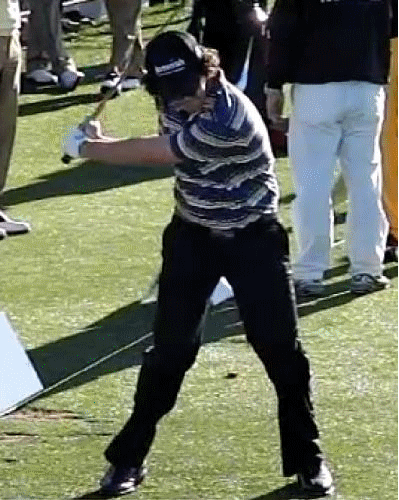
From front view, it sure looks like his legs start the downswing and surely he’s firing once again through impact. So it is understandable that one could make a case for the motion starting from the ground up.
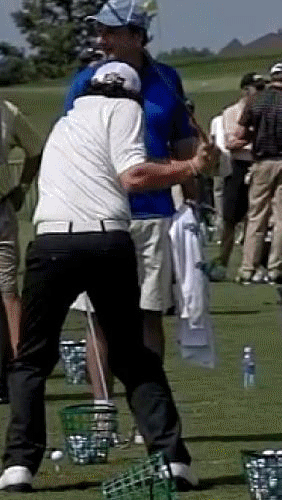
But from the back view you can clearly see that the spine engine is the initiator of the action. His sacrum or tailbone moves far before the legs move. The legs are only expressing the motion of the spine engine in Rory’s swing.
From the back view it looks like the spine engine is driving the swing in one big firing.
But it can only do this IF there is the necessary lateral bending and lumbar lordosis (from spine engine article draft…email me if you want a copy of this), the spine’s gears drive the rotation during the entire swing. See full video on youtube. http://www.youtube.com/watch?v=LakyyOUlgtE
Micro Move: Right Foot Wiggle
Another micro move was found while looking closely at Rory’s right foot. While I had already noted the left heel slide toward the target of Jamie Sadlowski during transition, I hadn’t noticed the complementary movements of his right foot that were happening at the same time.
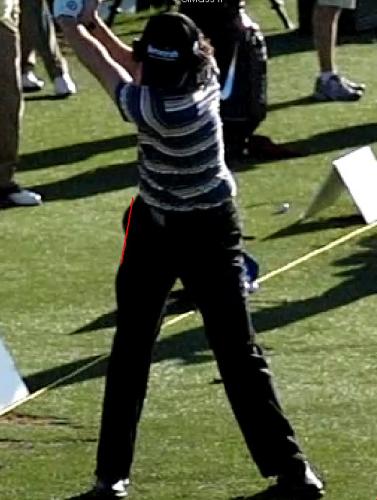
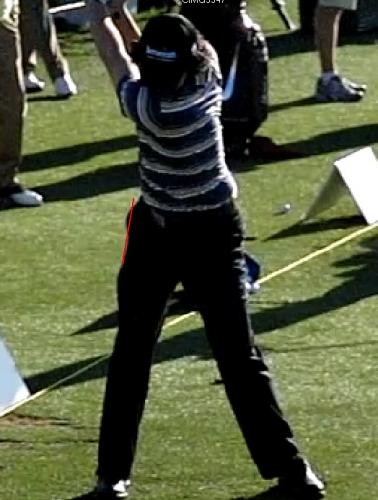
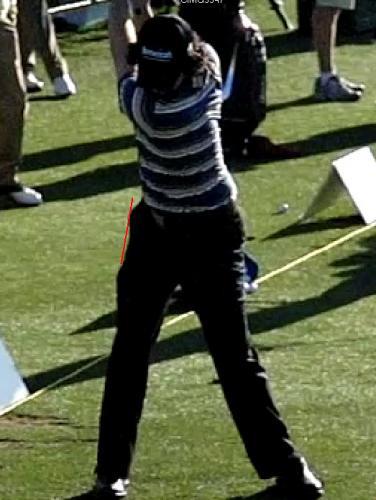
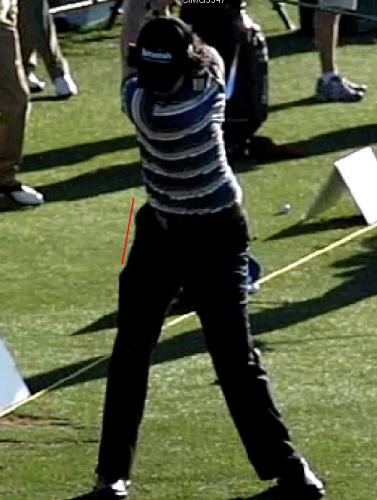
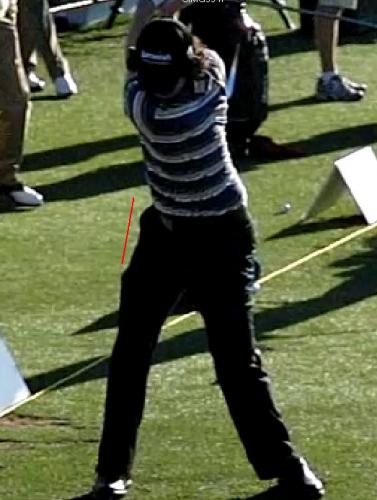
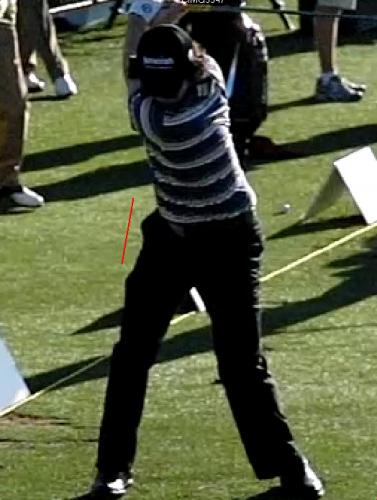
So take a close look at Rory’s right foot. It is slightly rolled and the weight is on the outside of his foot while he is doing the closed slide/drop.
In the front view animation, you can clearly see his foot wiggling around. His toes rotate away from the target and the heel moves slightly toward the target while the weight is on the outside of his right foot.
Yet, according to the kinetic link theory, Rory should be pushing off with his right leg and foot. Remember, current biomechanical science’s view is that one should drive with the legs, then transfer energy to the hips, then transfer to the shoulders and so on.
But it’s pretty clear that Rory isn’t following this ideology and that his foot wiggle is evidence of a spine engine driven swing.
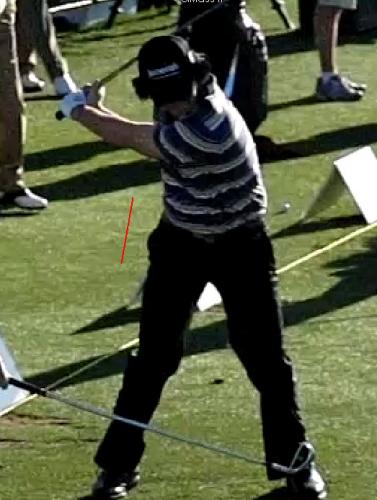
It is way down here, when his arm is at shoulder high, that his right foot finally looks firmly planted to the ground. From this point, he can push into the ground and pulse the spine engine to go faster. But he is certainly not pushing with his right foot at the initiation of his transition/downswing.
Just to be sure that it is not just a quirk of Rory. Take a look at the young phenom Ryo Ishikawa from Japan.
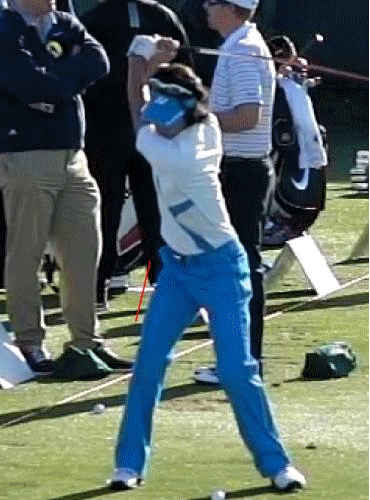
His right foot does a similar wiggle to the right during transition though his foot gets firmly planted a bit earlier. This is another case of the spine engine driving vs. the legs driving.
And of course, I have verified this with Tiger’s and Jamie’s swing. They have the same right foot wiggle.
Leg Driven Swing
To contrast, let’s take a look at some leg driven swings. But first, how many golfers have been told to “keep the weight on the inside of their right foot”? Or, “keep your right knee from moving on the backswing.” Then you can push off the right foot and drive the downswing.
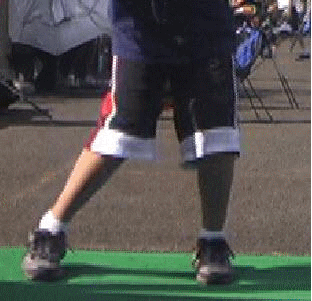
To contrast, here’s an example of a leg driven, over the top, swinger who shall remain nameless. LOL. Clearly you can see that the right foot and knee get kicking mighty early in the downswing. This is what causes his over the top action in his downswing.
But perhaps this is too exaggerated of an example for better players.
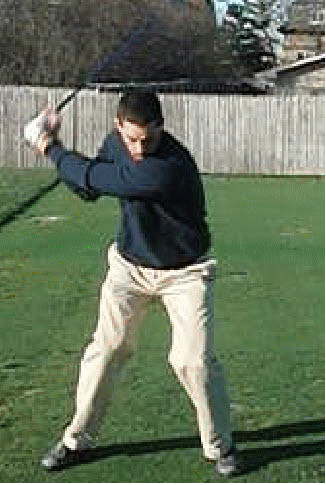
Here’s young entrepreneur Mark Sider with Team Sider, Inc. He and his brother have developed a new, all natural sports drink powered by coconut water, which is known for its ability hydrate the body and replace much needed electrolytes. Look for it in stores soon, it is called Greater>Than.
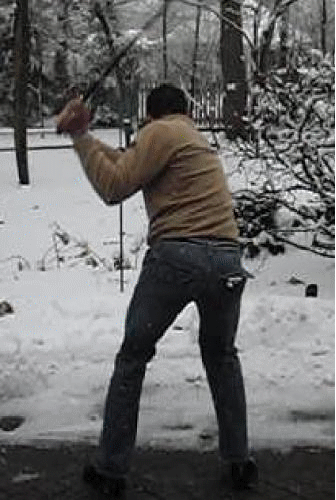
In his spare time, Mark is also on playing mini tour events on the west coast. Last spring he was deep into some un-athletic golf instruction that had him tilting too far left. This was causing him a major hip stall and flip where he could not control the ball very well.
So he’s a whole lot better now but in reviewing his old swings, he was actually using leg drive vs. the spine engine. There’s a small difference in the moves and the excess of leg drive created a hip thrust stall in his swing that wouldn’t go away.
There is a reason this leg drive doesn’t work that well and it relates to the spine engine movement. So that will be the topic of next month’s article.
2D Distortion
A little sidebar to this topic is the distortions we see in video. One of the biggest problems people have is that they view the golf swing in 2D video or worse yet, still pictures and a lot of times from just one or two perspectives; front and down the target line views. It is the reason we are so infatuated with planeology and the kinetic link. Yet these might be merely illusions and it would be quite a mistake to base any theory on a figment of someone’s imagination.
So let’s take a look at how 2D video or pictures can distort reality. Visit this site to see a 2D optical illusion. http://www.moillusions.com/2009/03/ziggy-travelers-optical-illusion.html
This should give you an idea of what the problem of looking at a 2D video. And aren’t these rotating cylinders similar to a golfer’s torso when looking at a video? Perhaps, there is an illusion of more lateral motion than there actually is?
More 2D Distortion of McIlroy Jr.
Objects rotating away from the camera lens appear to stop.
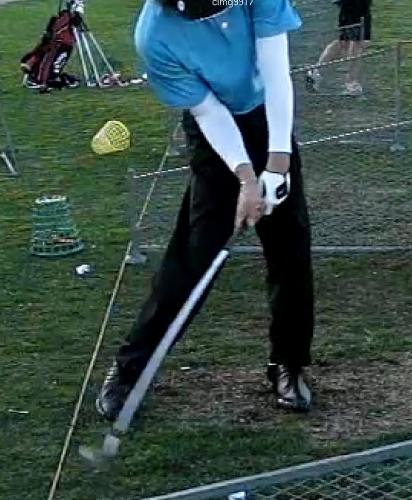
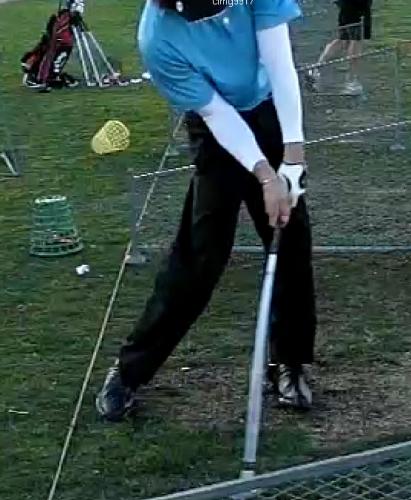
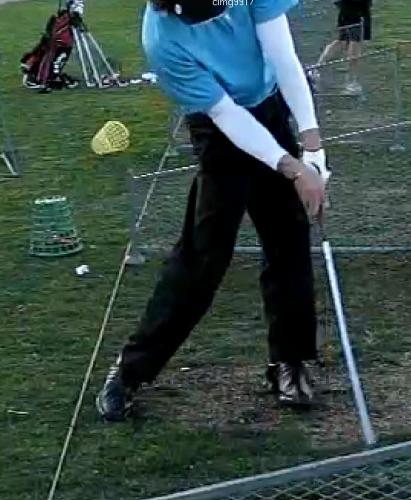
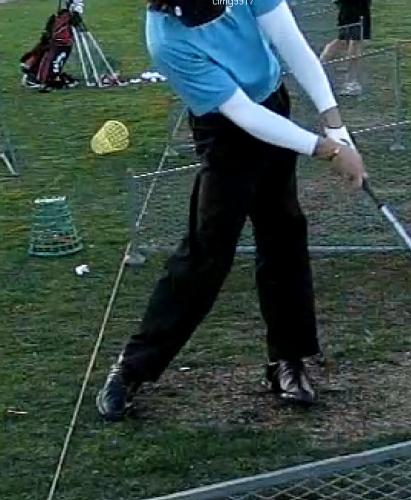
Here’s young professional Frank Greco’s left hip or side of his leg in this sequence, it surely looks like the motion has pretty much stopped or decelerated. But it’s just an illusion because we can only see the motion that is moving perpendicular to the lens. In other words, his hands are moving across the screen so we track that movement very well.
But his left hip and leg, when rotating, are moving parallel to the screen so we can’t possibly track that from this view only. We’d need to have his target line view to see that. Or how about a top view?
Top View
Take a look at a top view from perhaps from 30 feet above the great swing of Frank or McIlroy Jr. as we call him. We were doing spine analysis and that’s why his shirt was off and there were spots drawn on his back. But watch this on youtube for best results. Here’s the link. http://www.youtube.com/watch?v=Htd6tgxmHgU
Pay close attention to the movements of his left shoulder in relation to his left pants pocket. You’ll see they are moving in synch with each other through much of the swing. Do you see any signs of a deceleration of a proximal segment in order to let the next, more distal segment accelerate?
Another 2D Illusion: Lag or Mirage?
Here’s a gem from Rick on 2D distortion pertaining to lag. If the camera is not much higher up and shooting at the correct angle to the motion, tremendous distortions can exist.
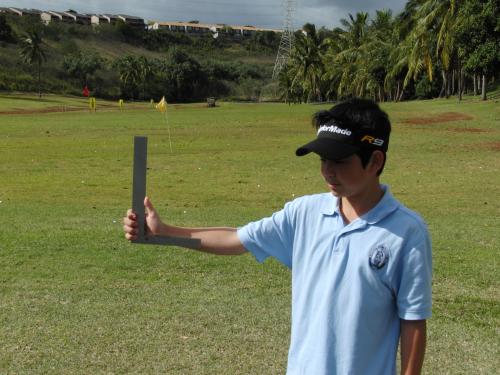
So here’s Kaleo holding a carpenter’s square so you can see that it is indeed a 90 degree angle.

But watch what happens to the angle when the carpenter’s square is tilted away from the camera. Did he increase his lag? I’m sure everyone will say he did. But how could he? Maybe he’s some great magician and he’s bending the steel square.
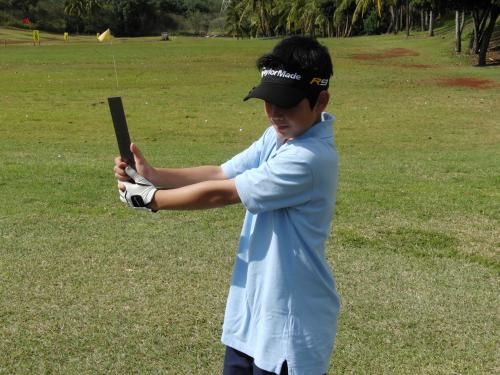
Then when tilted towards the camera, the angle looks greater>than 90 degrees. So it looks like he’s lost some lag.
Isn’t it interesting that this 2D distortion causes this optical illusion? Thus, we have to be careful when viewing these videos. And we have to be extremely suspicious with instruction based on these 2D distortions or risk a lifetime of golfing mediocrity.
As to the golf swing, it seems like Dr. Gracovetsky is looking more correct each day about the spine engine driving the swing and that “those golfers that push against the ground with their legs are doomed.”